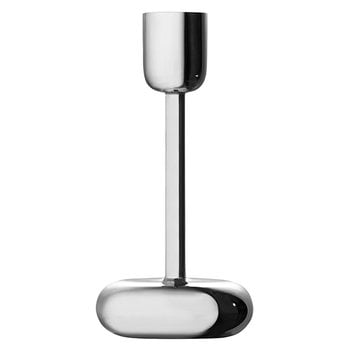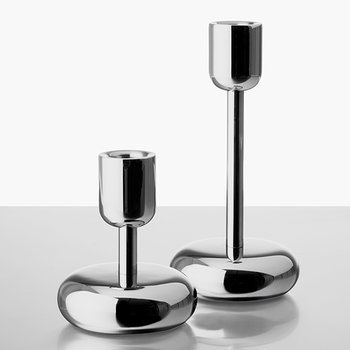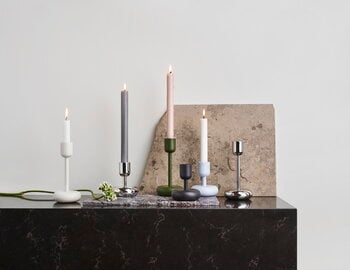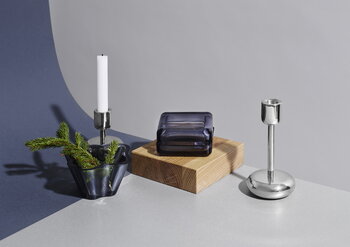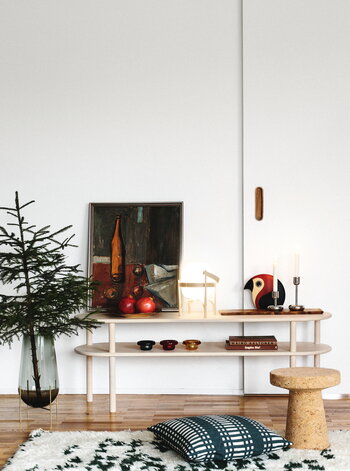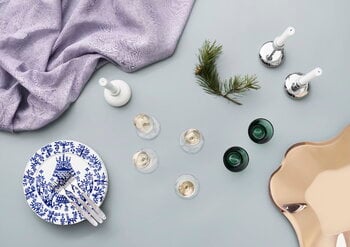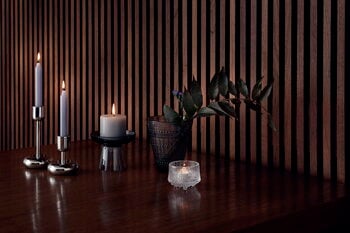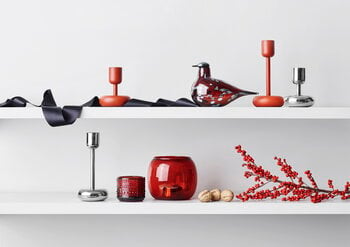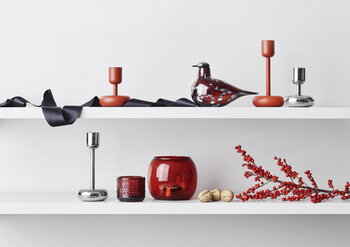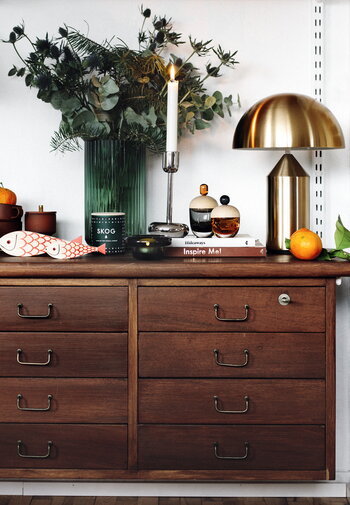Iittala's delightful Nappula candleholder was designed by Matti Klenell. He drew his inspiration for the round shape from the legs of a peculiar table he saw while visiting the Nuutajärvi glass museum. Nappula is a beautiful combination of classic and contemporary design and will stand the test of time. The sturdy base ensures the candleholder stays upright.
Nappula candleholder 183 mm, steel
Iittala
Description
Iittala's delightful Nappula candleholder was designed by Matti Klenell. He drew his inspiration for the round shape from the legs of a peculiar table he saw while visiting the Nuutajärvi glass museum. Nappula is a beautiful combination of classic and contemporary design and will stand the test of time. The sturdy base ensures the candleholder stays upright.
Product details (3)
- Material
- Steel
- Colour
- Steel
- Height
- 183 mm
- Product ID
Designer
The Swedish designer Matti Klenell (b. 1972) graduated from the Konstfack University College of Arts, Crafts and Design, Sweden, in 1999. Matti Klenell has become known for his innovative take on the Scandinavian idea of the intrinsic link between form and function. In 2000 he founded his own company, the Matti Klenell Studio, which works with various design commissions for a large number of clients.
Apart from projects to be produced serially, the studio also develops limited edition works as well as public and private art commissions. Klenell has been awarded as Designer of the Year in Sweden, and has won several prestigious national and international awards, including the Ljunggren Design Prize as well as the Red Dot Design Award for the Lempi glass for Iittala. His work is represented in the permanent collections of various museums.
View all productsReviews (1)
5
Based on 1 reviews
-
M
Marjo K
Helsinki, Finland
Hyvä! Jälkikäteen ajatellen olisi pitänyt pitänyt tilata 2 korkeaa jalkaa 1 matalan ja 1 korkean sijaan. Oma moka!
224 days ago
Sustainability
The Product Sustainability Framework, our criteria of sustainable design, helps you find the most sustainable products in our selection. Read below which sustainability criteria this product has met.
Working conditions & labour 8/9
-
Equal opportunities for all employees
-
Commitment to UN Global Compact, fair compensation for all employees
-
Corporate responsibility requirements defined and communicated for suppliers
-
Systematic work for improved inclusion and well-being in the workplace
-
Transparent supply chain
-
Suppliers' compliance to a code of conduct ensured
-
Compliance to the UN Guiding Principles on Business and Human Rights ensured in the supply chain
-
Support for community involvement in the supply chain
-
Direct suppliers audited and certified
Eco-friendly production 7/9
-
Fair and resource-wise water-use in production
-
No incineration or landfilling of returned items
-
No use of endangered species as materials
-
No direct environmental emissions or waste (excl. GHGs) from production
-
The sustainability of direct suppliers' production is addressed and monitored
-
Material-efficient and ecological packaging
-
Positive impact on nature’s well-being through operations that regenerate natural ecosystems
-
Production and material sourcing that respect biodiversity, animal rights, and natural ecosystems
-
No potentially harmful chemicals used in own production
Climate impact 5/8
-
Company's direct greenhouse gas emissions identified and commitment to reduction
-
Product's carbon impact identified and commitment to reduction
-
Guidance on energy- and eco-efficient use of the product
-
Contribution to climate initiatives beyond the brand’s direct operations
-
Low-carbon or compensated transportation
-
Carbon footprint of the product calculated and goals set to reduce it
-
100 % renewable energy in own production and operations
-
Carbon neutral or carbon negative product
Sustainable materials 5/6
-
Sustainable and long-lasting material choices
-
No harmful or hazardous substances
-
Responsible raw material sourcing and production
-
Materials suited for circularity: monomaterials, recyclable finishings, renewable or recycled contents etc.
-
Ecological materials: natural, biodegradable, recyclable or recycled contents
-
Outstanding materials in terms of innovativeness, responsibility, sustainability and circularity: local production or sourcing, 100 % recycled content, C2C-certification etc.
Circular design 3/5
-
High aesthetic quality promoting long-term use of the product
-
Technically durable product design and material choices
-
Design for enduring life-long quality
-
Design and support for product maintenance, repair and upgradability
-
Innovative circular design solutions: circular service system, resale platform, remanufacturing, collection of used products, etc.
